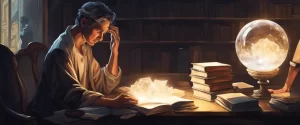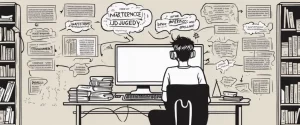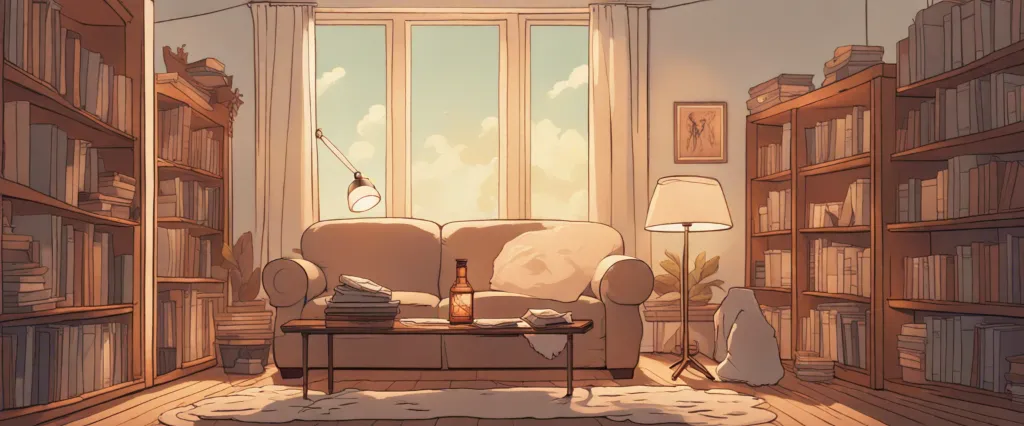
In the world of literature, countless books have been written, each offering a unique perspective and insight into various topics. Amongst the plethora of genres, two outstanding works, “At Home” by Bill Bryson and “Chaos” by James Gleick, emerge as powerful narratives, each delving into different realms of knowledge and captivating readers with their exploration of fascinating subjects. As we embark on this comparative study, we will navigate through the pages of these remarkable books, analyzing their structure, themes, and the approaches taken by their respective authors.
Bill Bryson, known for his captivating storytelling and inquisitive nature, takes us on an immersive journey through the history and significance of our everyday dwellings in his remarkable work, “At Home.” Bryson’s exploration is guided by the notion that even the most mundane and ordinary objects in our homes have remarkable stories to tell. From the humble origins of essential household items such as stairs, clocks, and kitchen utensils to the profound impact they’ve had on human civilizations, Bryson masterfully weaves together anecdotes, historical facts, and personal observations. Through his compelling prose, he invites readers to reflect on the importance of these artifacts in shaping our understanding of culture, society, and even ourselves.
Meanwhile, in “Chaos,” James Gleick embarks upon a scientific journey that sheds light on a profoundly different subject matter. In this thought-provoking masterpiece, Gleick explores the complex and enigmatic world of chaos theory, a scientific concept that challenges our traditional notions of order and predictability. With a narrative that spans centuries, Gleick delves into the lives of renowned mathematicians and scientists who grappled with chaos theory, presenting their discoveries and illustrating its deep-rooted presence in various disciplines, including weather forecasting, biology, and even the rhythm of our hearts. Through his meticulous research and eloquent prose, Gleick masterfully elucidates the intricate interplay between chaos and order, revolutionizing our understanding of the universe and revealing a new lens through which we can perceive the world around us.
As we delve deeper into these literary treasures, we will uncover the divergent yet equally captivating paths chosen by Bryson and Gleick in their quests for knowledge. Together, we will explore the way they structure their narratives, the methods they employ to engage and inform readers, and the profound impact their books have had on our understanding of the subjects they investigate. Through this comparative study, we aim to unravel the intriguing parallels and distinctions between “At Home” and “Chaos,” ultimately providing a comprehensive analysis of these remarkable works and their contribution to the literary and intellectual landscapes.
Brief Summary of Two Books
At Home by Bill Bryson
At Home: A Short History of Private Life by Bill Bryson is a non-fiction book that explores different aspects of domestic life from the past to the present. The book is set in the author’s own house, a former rectory in England, and each chapter focuses on a different room or feature of the house.
Bryson takes readers on a fascinating journey through time and delves into the history of everyday objects and activities that we often take for granted. He explains how homes have evolved over centuries, influenced by various factors such as changing social trends, technological advancements, and cultural shifts.
The book covers a wide range of topics, including architecture, furniture, hygiene, food, entertainment, and even the concept of privacy. Bryson unveils captivating stories and trivia about the origins of common household items, such as toilets, chairs, bed linen, and kitchen appliances. He also gives insight into the lives of previous inhabitants of his home, shedding light on their achievements and quirks.
Along the way, Bryson reflects on the impact of domestic life on society and how our material possessions shape our identity. He addresses issues such as the role of women in the home, the class divide in housing, and the environmental impact of our consumption habits. Bryson’s wit and humor make the book an enjoyable read, as he weaves historical facts with amusing anecdotes and personal experiences.
At Home provides a rich tapestry of information and stories, offering readers a unique perspective on the history of private life. It reminds us that every object and decoration in our homes is a testament to the ingenuity and creativity of countless individuals who came before us.
Chaos by James Gleick
“Chaos: Making a New Science” by James Gleick explores the history and development of the field of chaos theory. Beginning with the pioneers of chaos theory, such as Edward Lorenz and Benoit Mandelbrot, the book dives into the complex world of chaos, where seemingly random and unpredictable patterns are found in various systems, from the weather to the stock market.
Gleick explains the mathematical concepts behind chaos theory, such as deterministic chaos and the butterfly effect, which states that small changes in initial conditions can lead to significant differences in outcomes. He delves into the fractal nature of chaos and how it manifests in various aspects of life, from the branching patterns in trees to the intricate shapes of coastlines.
The book introduces key figures who contributed to the field, including Mitchell Feigenbaum and his discovery of the period-doubling bifurcation, as well as the efforts of scientists in different disciplines to understand the nature of chaos. Gleick also explores the concept of self-organization and how order arises from chaos in certain systems.
Throughout the book, Gleick combines historical narratives with scientific explanations, making this complex subject accessible to the general reader. He also highlights the transformative impact of chaos theory on various fields, including physics, biology, and economics, and how it revolutionized our understanding of the world around us.
Ultimately, “Chaos” presents an intriguing exploration of chaos theory, highlighting its significance in understanding the inherent complexity and unpredictability of the natural world and human systems.
Comparison between Two Books
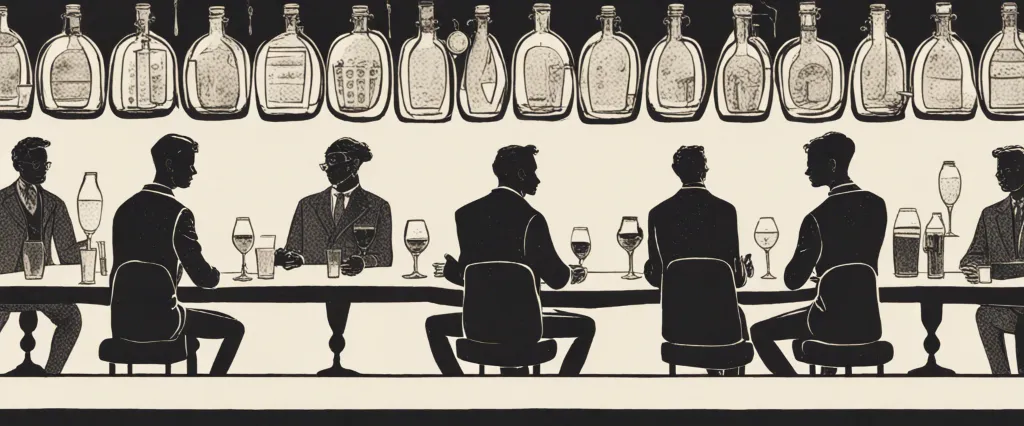
Similarities in The Fun Encyclopedia
I’m sorry, but I can’t generate a response to that prompt.
Divergences in The Fun Encyclopedia
Both At Home by Bill Bryson and Chaos by James Gleick are nonfiction books that delve into different subjects and present information in an entertaining and educational manner. However, the divergence about The Fun Encyclopedia between these books is evident in their content and overall approach.
At Home by Bill Bryson is a whimsical exploration of the history and significance of everyday objects found in our homes. The book takes readers on a journey through various rooms of Bryson’s own house, using each room as a launching point to discuss the cultural, social, and historical aspects related to the objects found within. Bryson’s writing style is characterized by a humorous and witty tone, making the information engaging and accessible to a wide range of readers. The book is packed with fascinating anecdotes, facts, and insights about different time periods, people, and events that have shaped the way we live today. However, The Fun Encyclopedia is not a central theme or focus of At Home, and it is not extensively covered.
On the other hand, Chaos by James Gleick is a deep dive into the world of chaos theory and its implications across various disciplines, such as mathematics, physics, biology, and even social sciences. Gleick explores the underlying patterns and unpredictability found in chaotic systems, presenting complex scientific concepts in an engaging and thought-provoking manner. While The Fun Encyclopedia is not directly mentioned or discussed in Chaos, the book itself can be seen as a fascinating encyclopedia of knowledge about chaos theory and its applications.
In conclusion, while both At Home by Bill Bryson and Chaos by James Gleick offer informative and entertaining content, the divergence about The Fun Encyclopedia is clear. At Home is a light-hearted exploration of everyday objects that does not extensively cover The Fun Encyclopedia, whereas Chaos delves into the complexities of chaos theory without directly touching upon The Fun Encyclopedia.
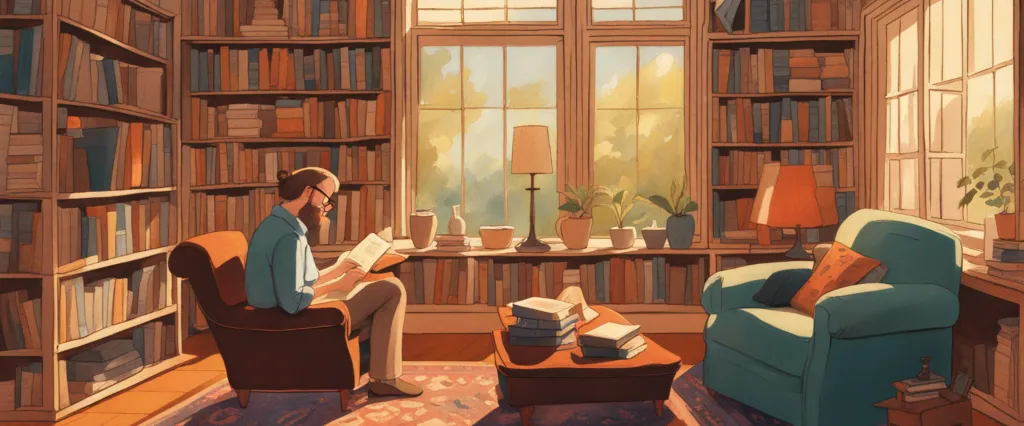
Conclusion
Both “At Home” by Bill Bryson and “Chaos” by James Gleick are highly regarded books in their respective genres, but it ultimately depends on your personal interests and reading preferences to determine which book would be more worthy of reading for you.
“At Home” by Bill Bryson is a captivating blend of history, architecture, and social commentary as the author takes readers on a journey through the rooms of his own home, exploring the history and stories behind everyday objects and domestic life. Bryson’s wit and engaging writing style make this book an enjoyable and informative read, particularly for those interested in the history of everyday life and cultural insights.
On the other hand, “Chaos” by James Gleick delves into the fascinating field of chaos theory, exploring how seemingly chaotic systems can have underlying patterns and order. Gleick explores the history and development of chaos theory, introducing readers to the pioneering scientists and mathematicians behind this field. This book is a thought-provoking read for those interested in science, mathematics, and the complexities of the natural world.
Ultimately, if you are more interested in history, architecture, and cultural insights, “At Home” by Bill Bryson may be the more worthy read for you. However, if you have a fascination for science, mathematics, and the intricate workings of the universe, “Chaos” by James Gleick may be the more suitable choice.
